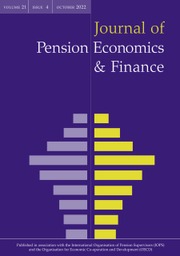No CrossRef data available.
Article contents
Fiscal stimulus and pension contributions: evidence from the TCJA
Published online by Cambridge University Press: 06 November 2024
Abstract
We evaluate the impact of the 2017 Tax Cuts & Jobs Act (TCJA) pension tax break on sponsor contributions to defined-benefit retirement plans. We exploit cross-sectional variation in ex-ante exposure to the tax break. We find that the tax break induced an extra $2.8 billion of sponsor contributions to medium- and large-scale plans in 2017. However, we find strong evidence of reversal, both in terms of sponsor contributions and plan funding ratios by 2018. Our contributions model indicates that this reversal is consistent with more binding financial constraints in 2018 relative to 2019. Our results suggest that the TCJA did not have a long-lasting impact on corporate defined-benefit pension funds.
- Type
- Article
- Information
- Copyright
- Copyright © The Author(s), 2024. Published by Cambridge University Press


